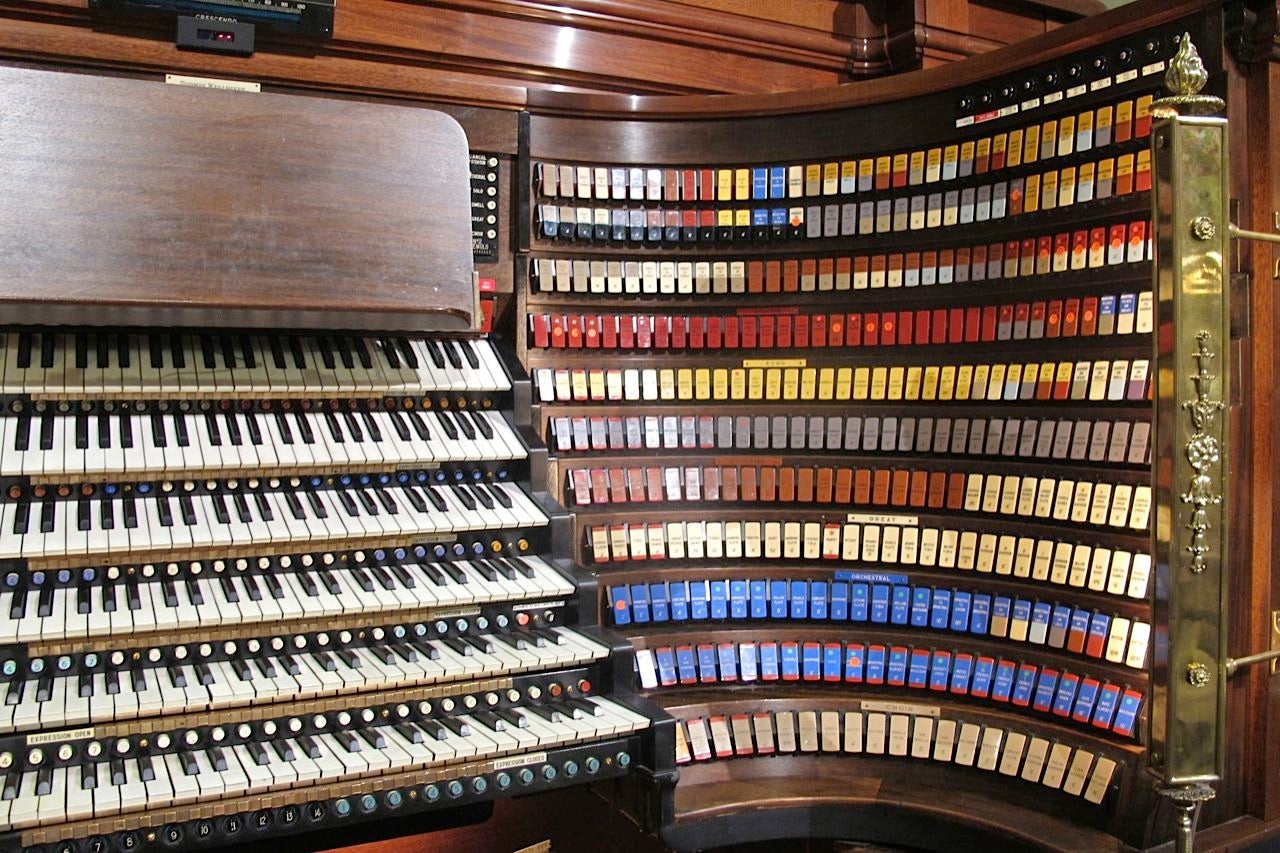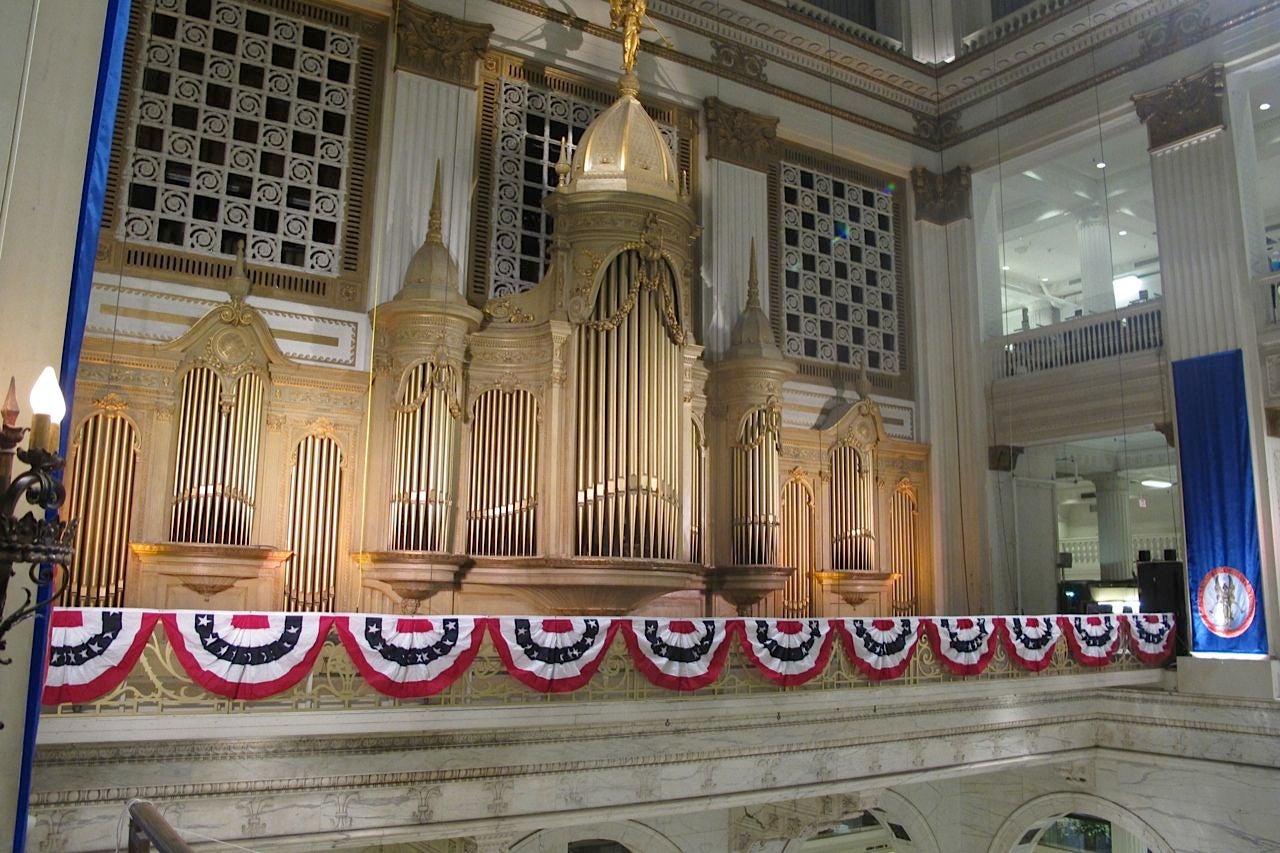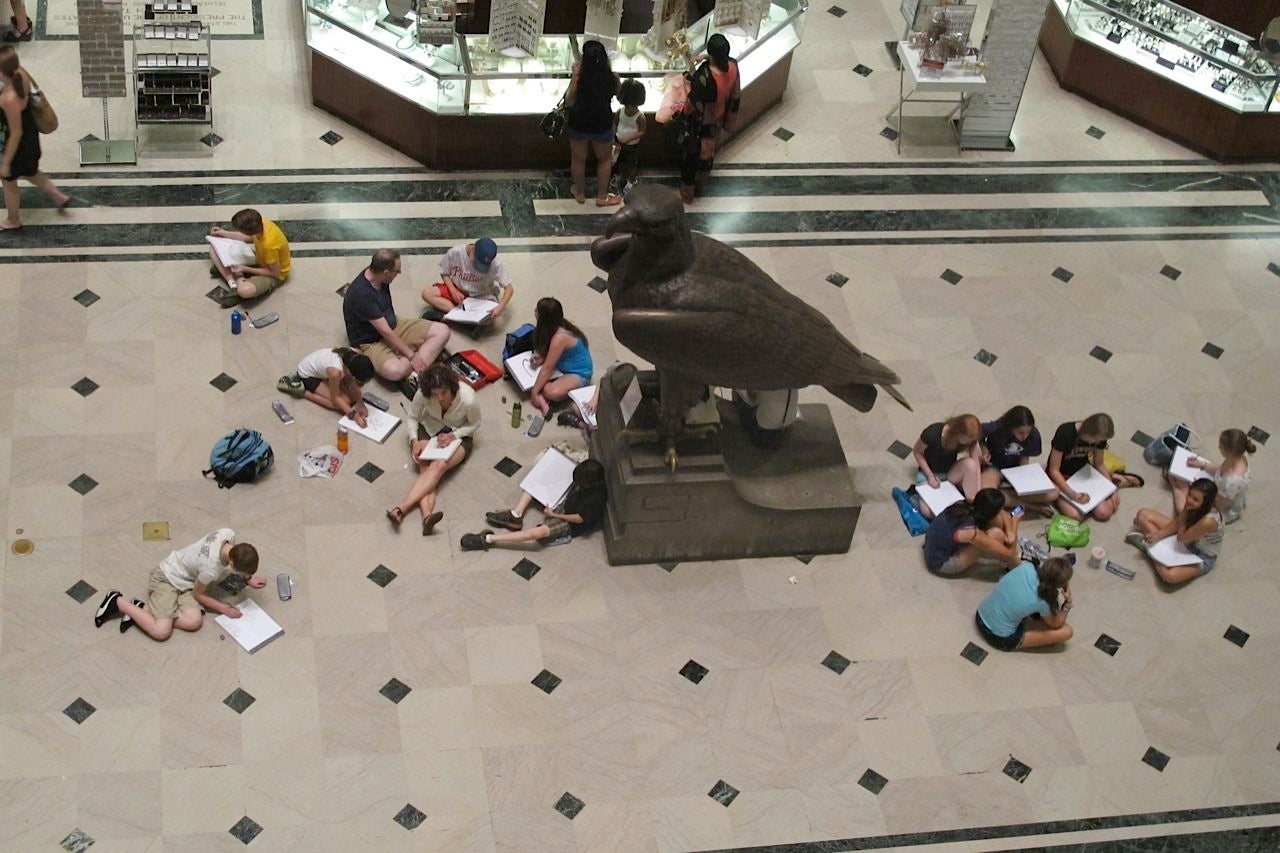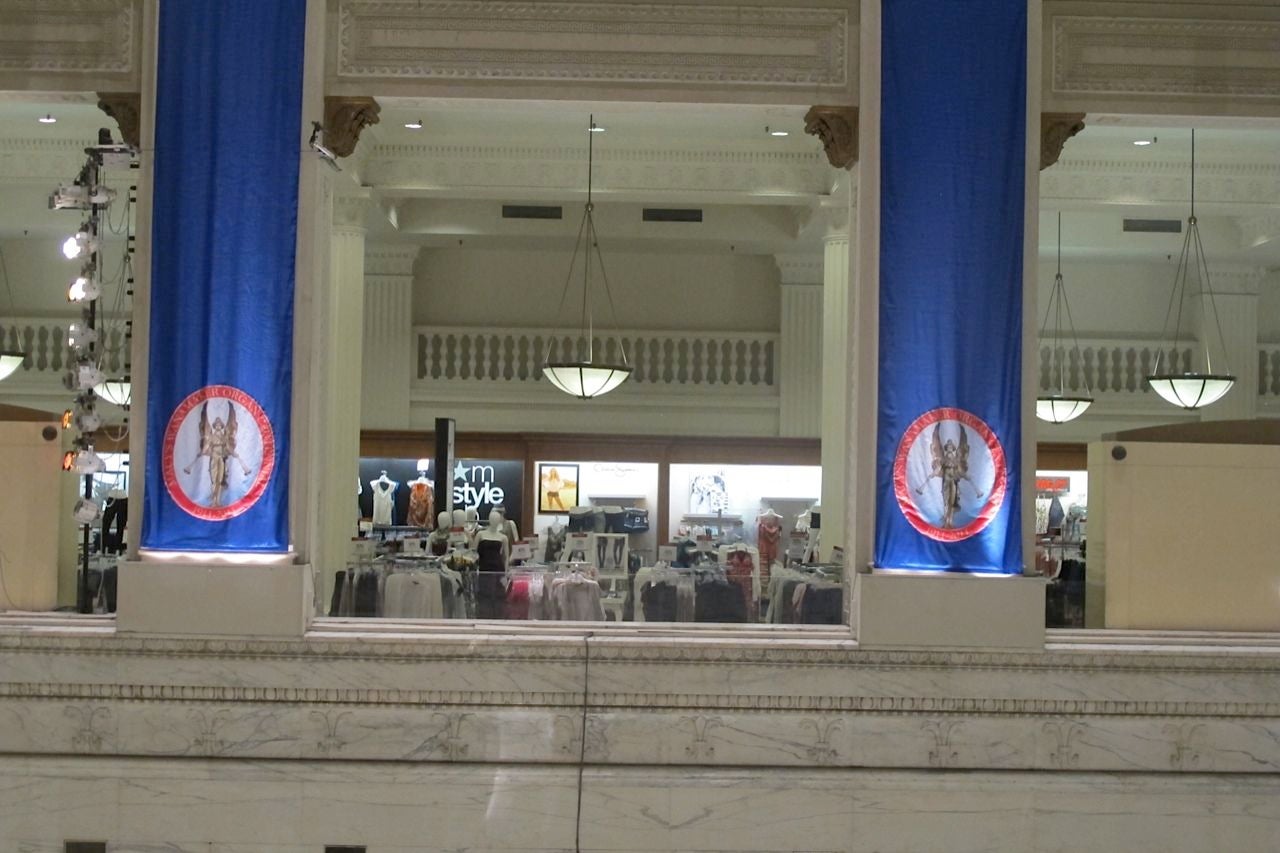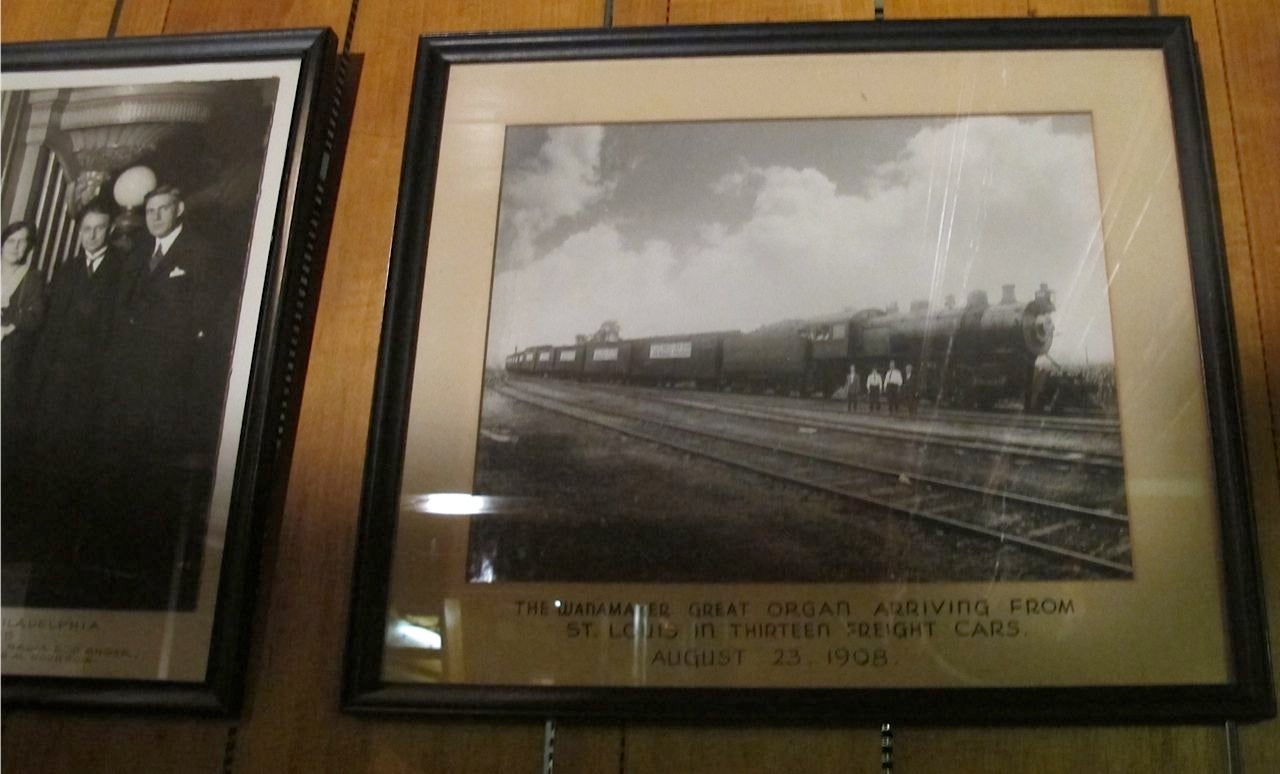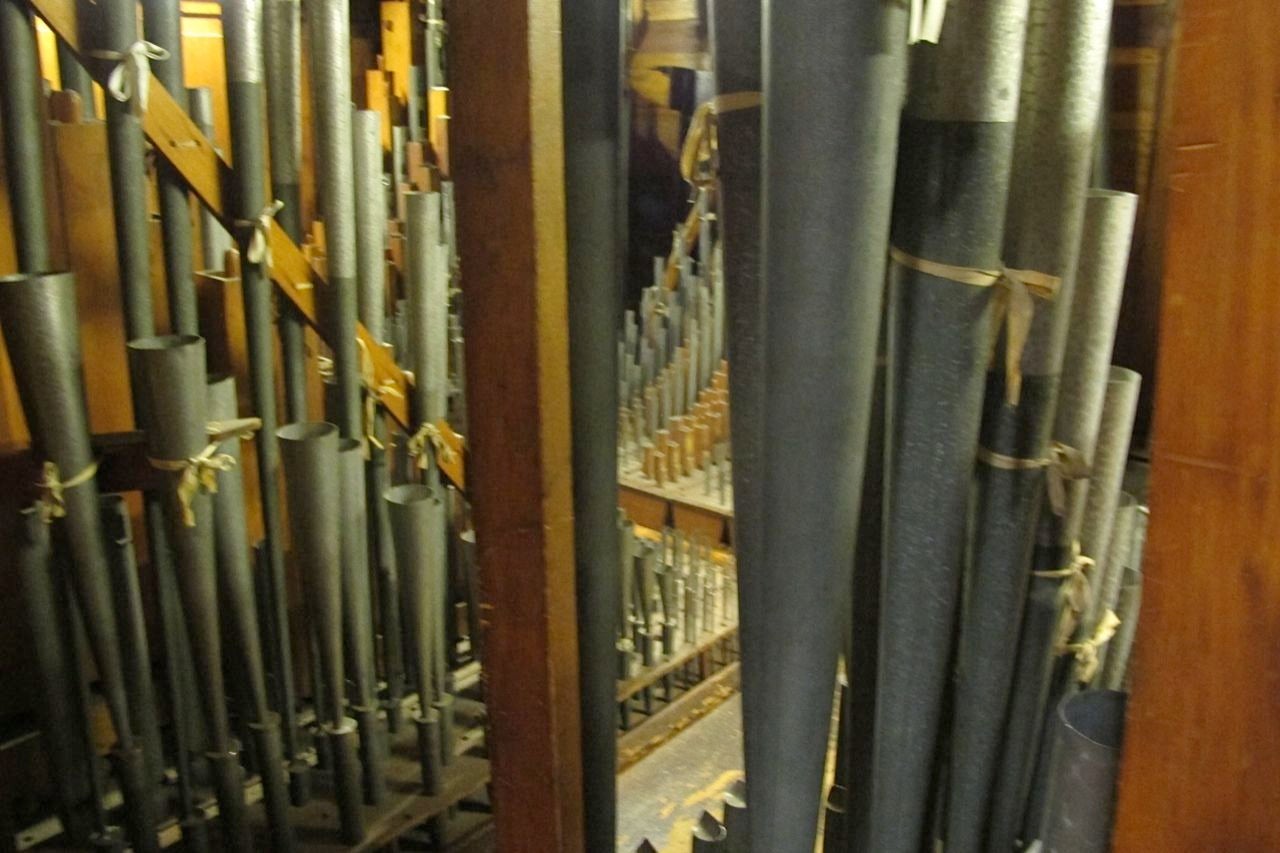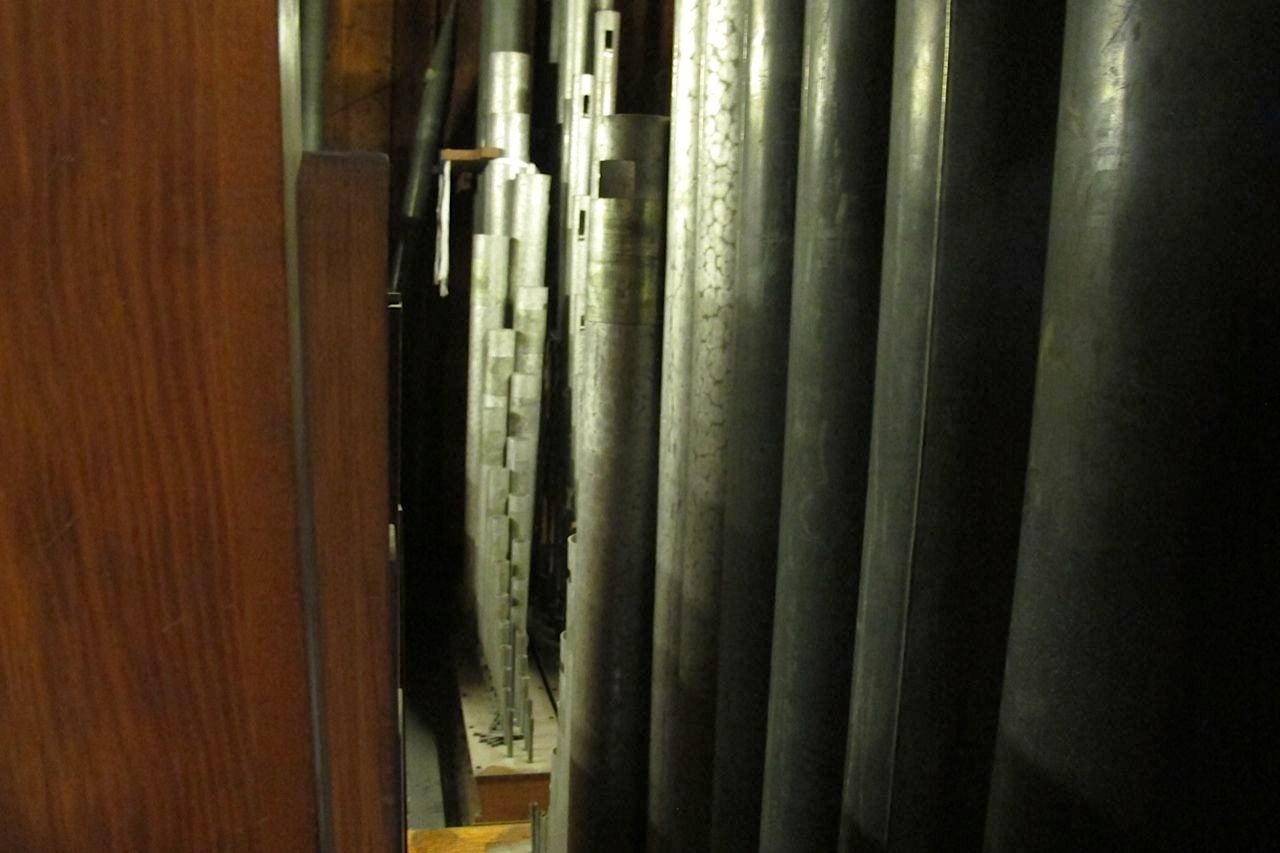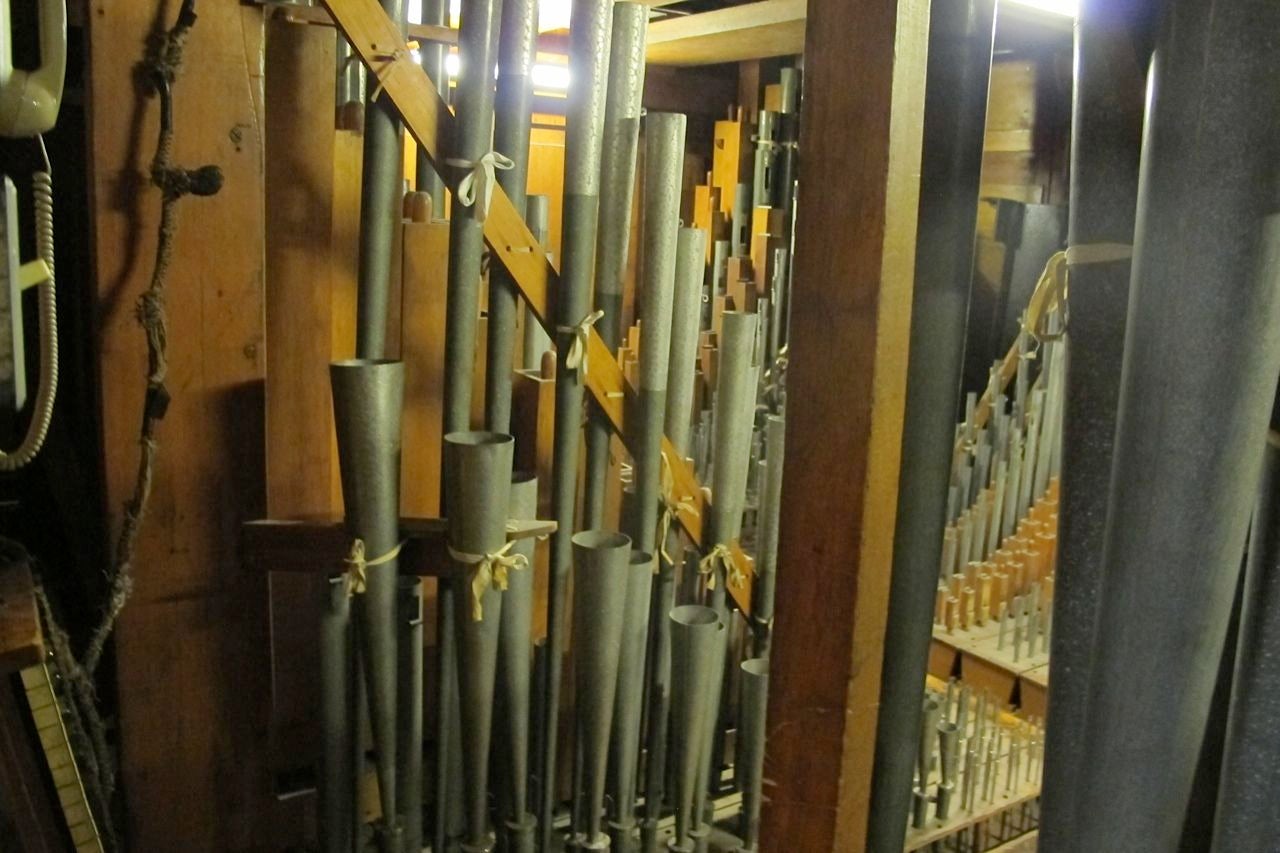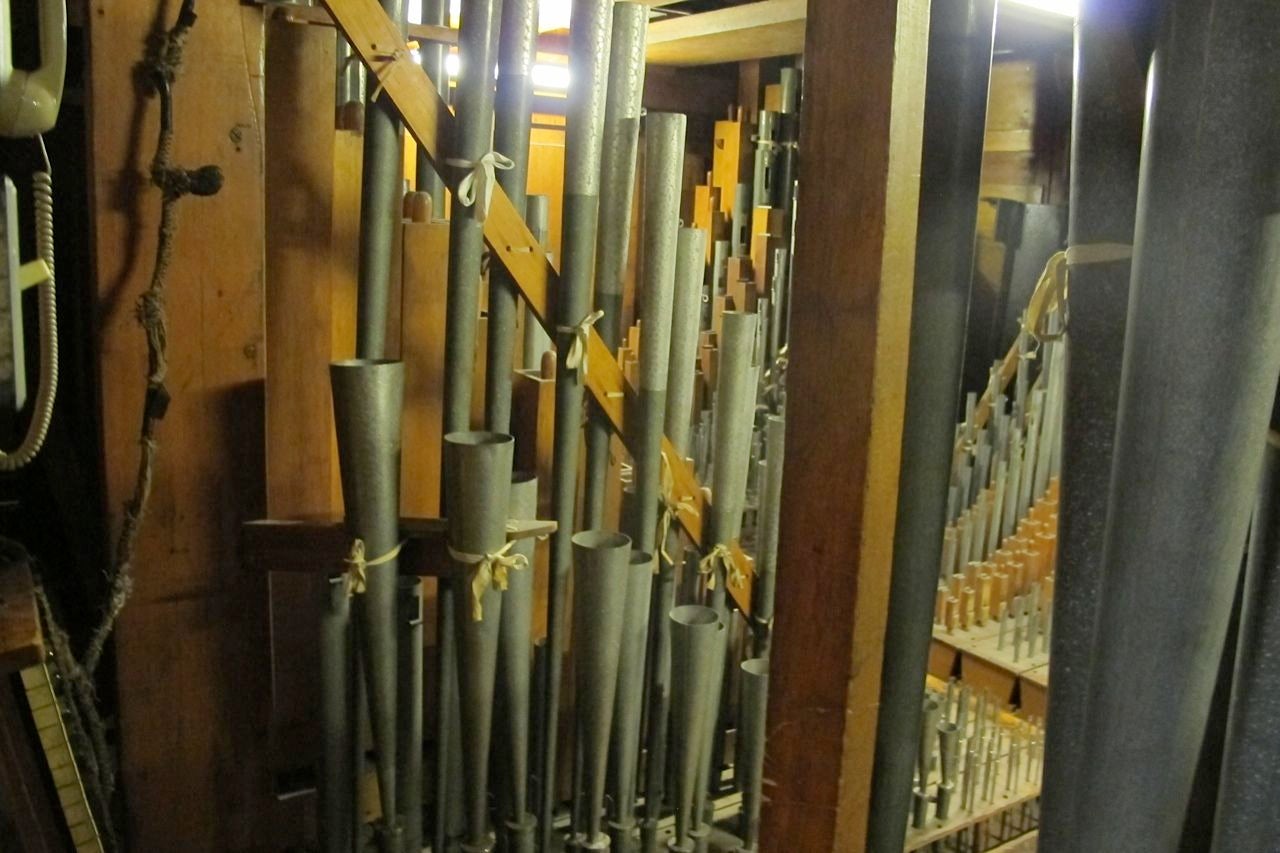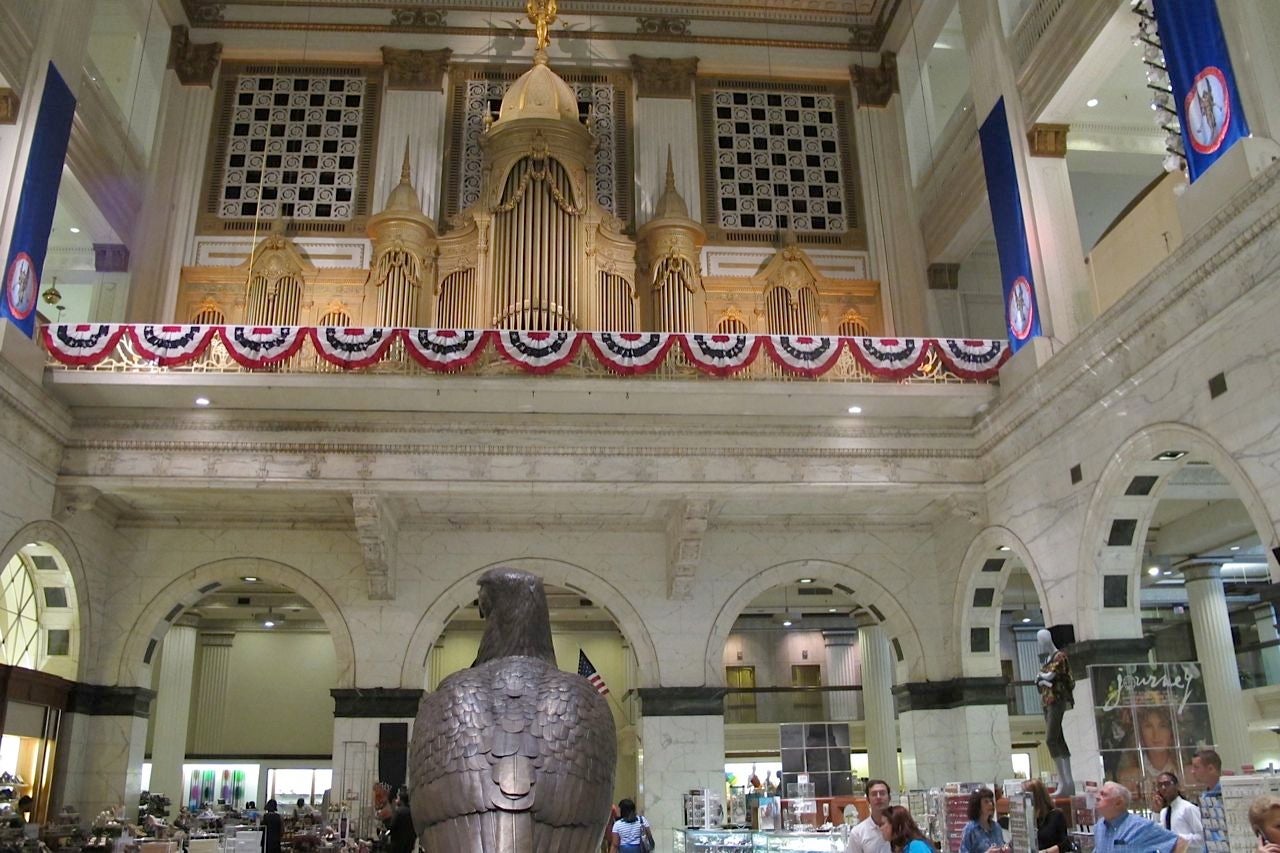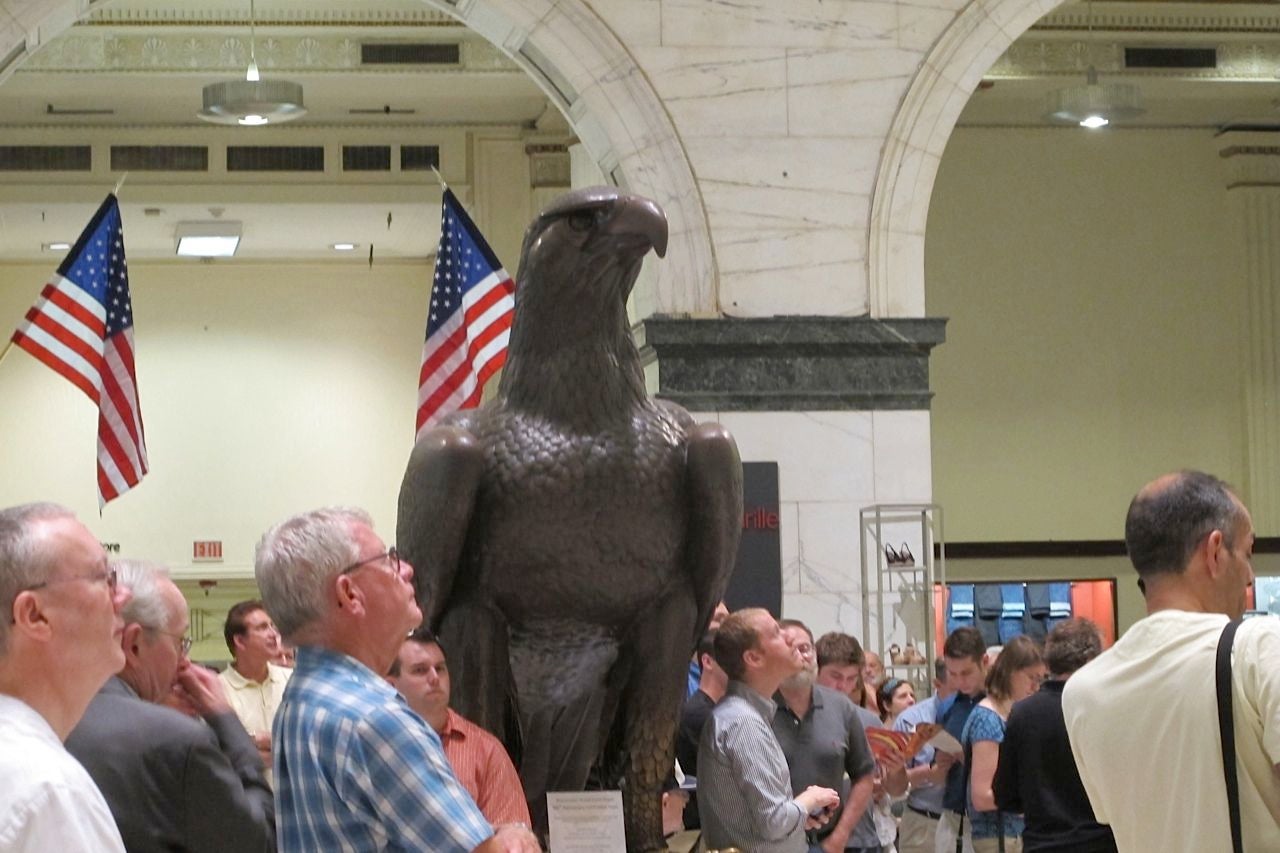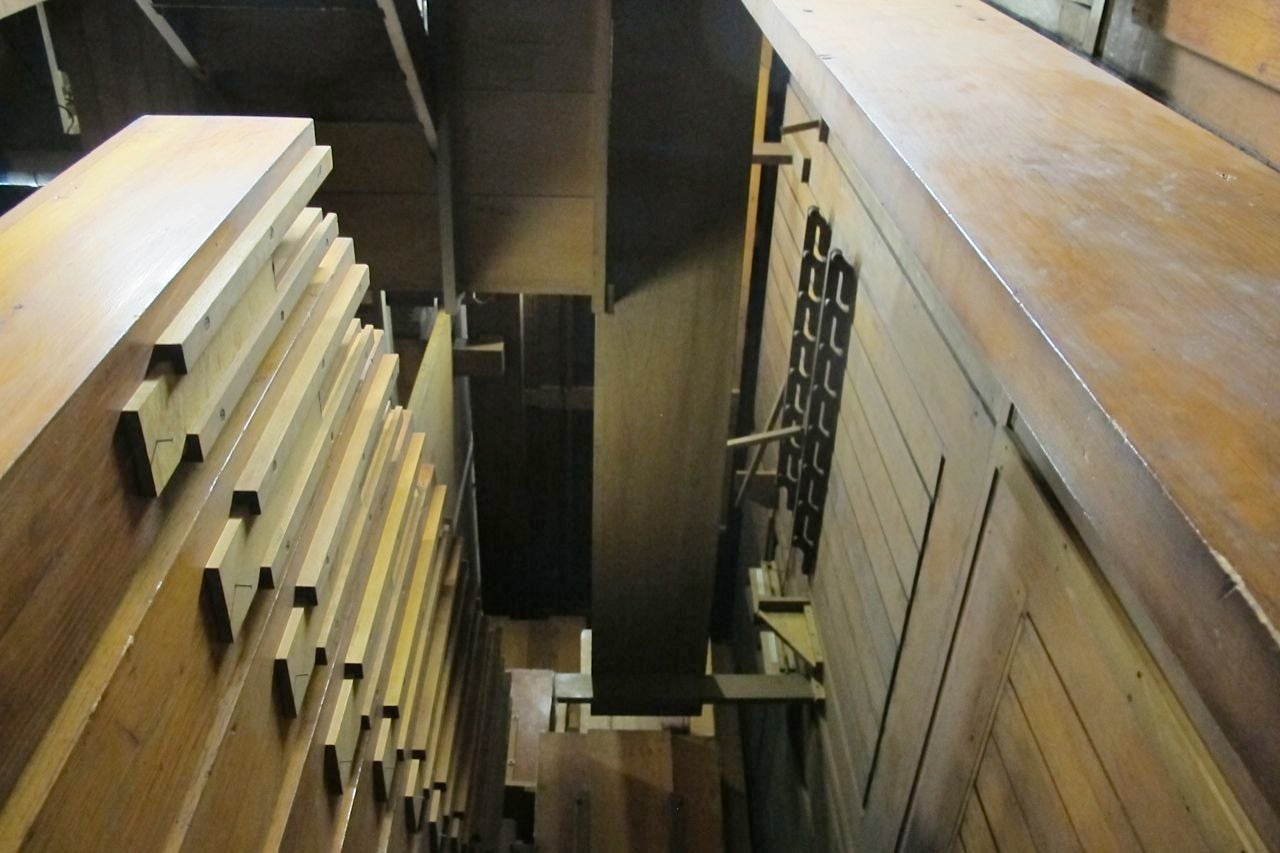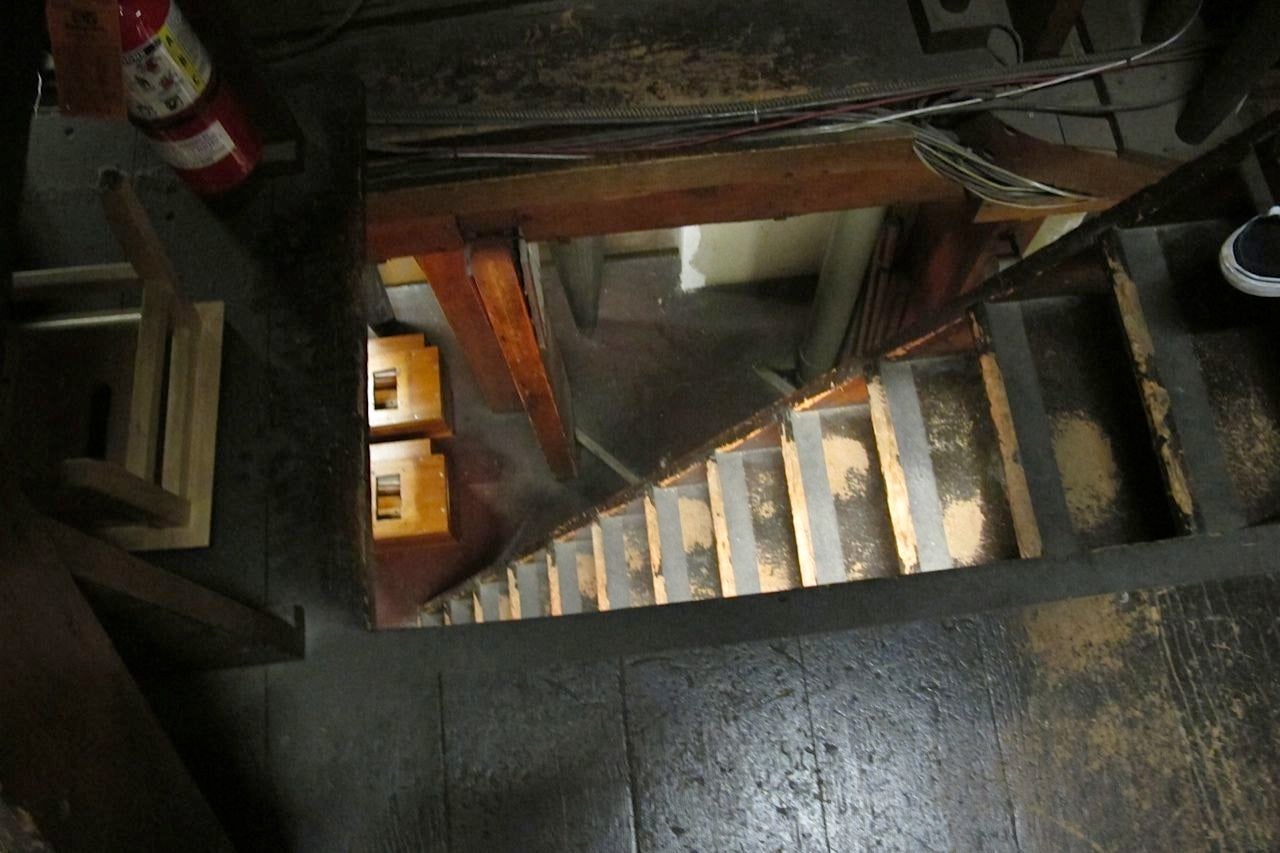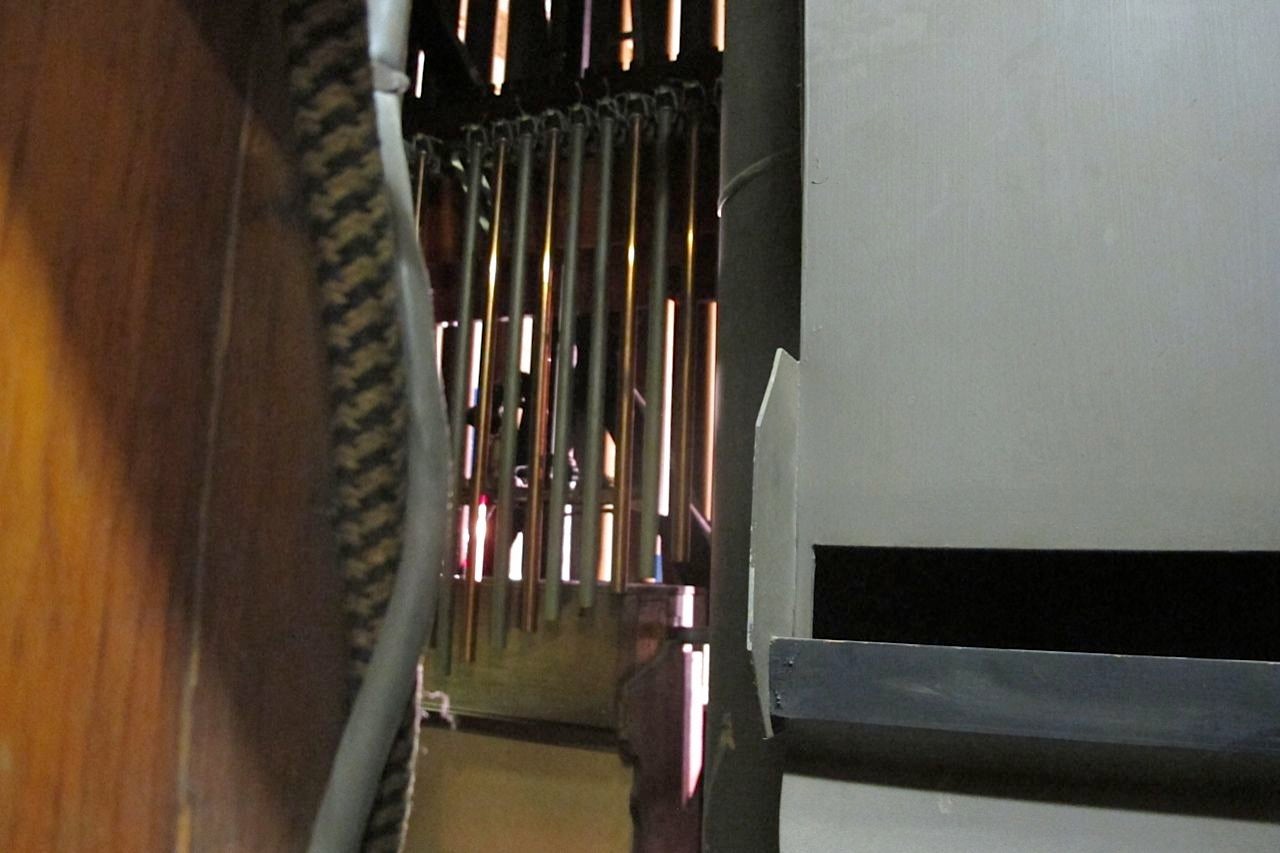Celebrating 100 years of the Wanamaker Organ – and taking a peek inside
One hundred years after the world’s largest working pipe organ was first played at Wanamaker’s department store, world-class organist Peter Richard Conte worked his magic on the keys, foot pedals and tabs that make the organ sing.
The crowd enthusiastically applauded Conte.
He applauded the instrument, lifting his arms toward the wall housing more than 28,000 pipes, and the circuitry that enabled his hands and feet to communicate with them.
But none of the wonderful sounds Conte summoned during Wednesday’s celebration of the organ’s centennial came from the ornate gold pipes topped with the Wanamaker angel that are visible above Macy’s Grand Court.
“They’re fake,” said Scott Kip, restoration woodworker on the nine-person team that keeps this rare instrument in concert shape.
The actual working pipes – made of wood or metal in sizes ranging from flute to tree-trunk – are not usually seen. They weren’t apparent in 1911, when the two-year installation of the organ was completed at the direction of John Wanamaker, either.
“People kept asking, ‘Where’s the organ?’” Kip said. And so Wanamaker had his architect create the marvelous but mute set of visible pipes.
The fancy pipes are dwarfed by the working pipes, which are housed in a house-sized space behind a white door in the woman’s clothing department. The inside of the organ is four floors high, and larger than a typical trinity.
Most of the main chamber is made of wood – poplar and pine. And it smells slightly of pine or incense, almost like a church. A small raised board-walk of sorts snakes around what seem like support columns, but what is really wooden ductwork through which air flows on its journey to the pipes.
What looks like a twin-bed sized wooden platform turns out to be a windchest – an air reservoir. There’s a popping sound, and then a rumbling, and then the monster takes a breath, filling its huge, leather lung.
The bottoms of some of the largest pipes – including three that look more like pieces from a ship than an organ – are visible on the ground floor. A narrow, ladder-like stair case leads upward, and looking through a large opening or a small door reveals row after row of pipes, arranged together and looking almost like they grew that way.
Also within the organ: A large sink, an old-fashioned telephone that Friends of the Wanamaker Organ Executive Director Ray Biswanger bought on Ebay, and a piano.
The piano has keys and all the other parts one would think, but it is played from many yards away, at the console.
The organ was built by the Los Angeles Art Organ Company for the 1904 St. Louis World’s Fair. It cost $105,000, and drove the builder into bankruptcy, said Anne Ewers, Kimmel Center president and CEO, who lead Wednesday’s centennial celebration.
John Wanamaker thought the instrument would be perfect in his Philadelphia department store, so he bought it in 1909. “It took 13 freight cars to transport it from St. Louis to Philadelphia,” Ewers said. “And it took two years to assemble them here.”
Played the first time in Philadelphia as England’s King George IV was coronated, the organ is now worth $68 million, she said.
As part of the celebration, Conte, the organist, received a Philadelphia Music Alliance star award for musical achievement – the stars embedded in the sidewalk on South Broad Street, aka the Avenue of the Arts. Conte has played for audiences of National Public Radio and Good Morning America. He’s played in many countries, and goes on tour. But when he’s home, he performs at Wanamaker’s twice daily. He became Grand Court Organist in 1989, and is the fourth person to hold the title.
Hearing Conte play the organ on its hundredth anniversary in Philadelphia “Just sends chills up and down everyone’s spines,” said Biswanger, of the Friends of the Wanamaker.
The Wanamaker Organ is special not just because of its age and size, he said. “For all its size, it’s about delicacy and subtlety,” he said. Physically, the organ is both an unbelievable machine and a work of art, he said. “It has such fine workmanship. The best materials were used, no short cuts.”
If it could, the organ might speak as effusively about Biswanger and its other Friends.
Back in the days of John Wanamaker, the entire top floor and a staff of 30 were dedicated to the organ’s upkeep.
But it was not long ago that the organ was far from pampered.
“The organ sort of languished for 30 years or so,” Kip said. “There were only two people on staff, and they worked in a tiny room, and the things they had to fix wouldn’t even fit in it.” In the fall of 1991, the Friends of the Wanamaker was formed. They worked hard to bring attention to the organ’s plight.
When assistant curator Sam Whitcraft came to work on the organ project about 17 years ago, the organ budget was $100 a month. If you bought some tools, for example, you were out of budget, he said. About a decade ago, “we started receiving more grants,” Whitcraft said. The budget is a lot bigger now, he said. There have been individual benefactors, Kip said, and Macy’s appreciates the organ more than some previous store owners did.
Kip uses a workbench from that original shop, moved to the new shop – a mezzanine that had been used as a “junk floor” for unwanted fixtures. The hand tools, materials and methods Kip uses aren’t much different from the woodworkers way back when, either.
As old as the organ is, there are still new things in store for it. Remember the piano inside the organ? There’s also a “piano II” tab on the console, and Kip said there are plans to hook up a second piano, likely a grand, to that.
And one not-too-long ago day, organ curator Curt Mangel walked into the shop with an announcement that has the organ team working on a 13-foot, 40-note project in wood, leather and brass: “We’re going to restore the gong.”
Learn about more centennial events at the Friends of the Wanamaker website.
Reach the reporter at kgates@planphilly.com
WHYY is your source for fact-based, in-depth journalism and information. As a nonprofit organization, we rely on financial support from readers like you. Please give today.



